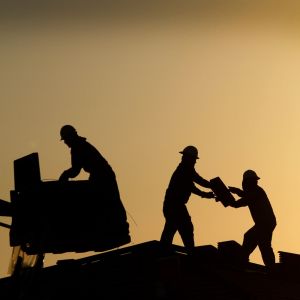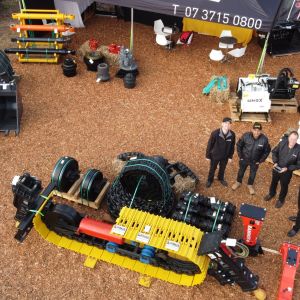![]()
“Never let a good crisis go to waste”, as Winston Churchill famously stated and helped reshape a country recovering from war into a long-lasting competitive democracy. Many crisis stars are now aligning, and we have perhaps a once in a generation chance to make Australia great again, building widespread wealth if we grab the opportunities.
Labour & skills shortages and exponential shipping and supply chain cost increases are fuelling an as yet largely unrecognised rise in inflation, fuelled by negative real interest rates (that’s right, you are actually losing money by leaving it in the bank). The environment has actually rarely been better for people who want to make money in the future. I’m not talking about flipping houses to each other by further inflating the housing bubble whilst jacking up debt levels, but the opportunities that abound with starting or growing businesses, even in sectors where we previously lacked global competitiveness.
In a fast changing world, many businesses trialled working from home last year, and the long term proportion of people doing this in the future is expected to be 2-3 times greater than prior to Covid19. Phase 2 is now underway, which as I predicted working from home (WFH) could become working from anywhere (WFA) – New Castle based insurer NIB has already proudly stated that they are allowing one of their good WFH employees to relocate to Canada. Whilst I understand the thinking in wanting to keep a good productive employee, this should also sound alarm bells that any job that does not require a physical presence in a workplace in Australia can in fact also be recruited overseas. Part of this globalisation transition will therefore be that unless productive output by Australians stacks up per dollar they cost to employ, pays will have to equalise to match other countries. As we have a minimum wage of more than double say the USA, be careful what you wish for in other words.
Australia’s manufacturing self-sufficiency ratio is the lowest of all OECD countries at only 71.5%. So what does this mean? Before we even add our geographic isolation, Australia is one of the most vulnerable countries in the world to supply chain issues. Two thirds of products that make us vulnerable come from China. During Covid for instance, we had limited access to face masks, sanitisers and could produce just one vaccine onshore. Even for power generation we’re in the absurd position of exporting increasing quantities of coal and uranium, a CO2 free power source we don’t even allow ourselves to use. The metallurgical coal and iron ore we export (and don’t have capabilities to add value locally) gets imported as finished products. Further, we have no shipping capability, with ships from Chinese ports destined for Australia now being re-routed because of port delays and inefficiencies meaning the ships can do two round trips to Europe or America for every single trip along the Australian East coast.
So now, many of the metrics are in the “right” position to benefit the entrepreneurial spirit to capitalise on these opportunities to build a sustainable Australia by making things here. We need to ensure that irrespective of what happens in the rest of the world, we can produce everything we need to continue as a nation. Smaller nations such as Sweden and Israel are capable of self-sufficiency, but it took decades to establish. Note that neither of those nations are particularly poor and are competitive in many sectors including manufacturing.
Despite exporting 70% of our total agricultural production, we are still dependent on imported food. This week, Fair Work ruled that farmers are no longer allowed to have employees based on piece work rates. All persons are entitled to fair pay for a fair day’s effort, and I don’t believe anyone has ever objected to that. The horticultural and wine industry awards had the ability for employers and workers to agree on a piecework rate or an hourly rate, a system that probably had a bit of natural selection built into it. The piecework rate had to allow the “average competent employee” to earn at least 15-20% more than the hourly rate in the award. Part of the problem around potential underpayments was that because it is so difficult to hire (and fire underperforming) employees in Australia, employing especially seasonal workers was being outsourced to labour hire firms. I don’t know too many farmers that would have the inclination or see the benefit of trying to run a HR department during the busiest period of the year.
So for an industry that was already struggling with worker shortages, what is the impact from this change and the precedent it has set? All the workers will now be getting the same rate. Productive workers were getting roughly twice as much as they will be now. Hypothetically, others will be getting guaranteed more than they previously were, but as these were casual roles, anyone not achieving enough output to pay for the costs of having them employed will no doubt find themselves without a job instead. And the productive people will consider if it is still worth doing the jobs they were doing well for a lower rate in the future, or if they should look for other opportunities. The agricultural sector will therefore find itself in an even worse situation in terms of viability and finding people to work in it. The end result can only be that either the industry finds ways to improve efficiencies by for instance automation, or if the businesses become unprofitable they will be forced to close. What might sound like a win for fairness is indeed a lose, lose, lose situation.
Australia finds itself at a fork in the road. We must make the most of these market conditions to adapt to a self-sufficient future by encouraging more entrepreneurial Australians to have a go at starting competitive businesses. Let’s give everyone the incentives through reward for effort to make this an attractive proposition, as well as remove many of the hurdles associated with trying to run any business.
Director ID’s Tackling phoenix activity
Because of the nature of assets within our industry, construction is overrepresented when it comes to illegal phoenix activity. Company Director ID’s are now being introduced to trace related party transactions.
Phoenixing is where a company that is going broke transfers assets to another related entity, whilst avoiding paying outstanding debts and obligations. In an initiative to tackle this, by November 2022, all existing 2.7 million company directors will now have to register on the new Commonwealth Modernising Business Registers (MBR) program (https://www.abrs.gov.au/director-identification-number). With immediate effect, any new directorships will need to be registered within 28 days and prior to taking on a new directorship.
The intent of this is to reduce the estimated $2.9-5.1 billion per year that is scammed from employees (estimated to lose $32-298 million per year), creditors ($1.2-3.2 billion) and the tax office (about $1.7 billion). It is also meant to bring together more than 30 government registry services by 2024.
Despite scepticism of yet another government registration and a bureaucracy to support it, this seems to be a good move overall. We still have tax file numbers, medicare numbers, MyGov accounts, USI training numbers etc, so one wonders why they couldn’t simply combine all these numbers into one citizen number or similar. Countries like Sweden have been using this for decades. Small steps…
As always, onwards and upwards!
Fred Carlsson
General Manager



